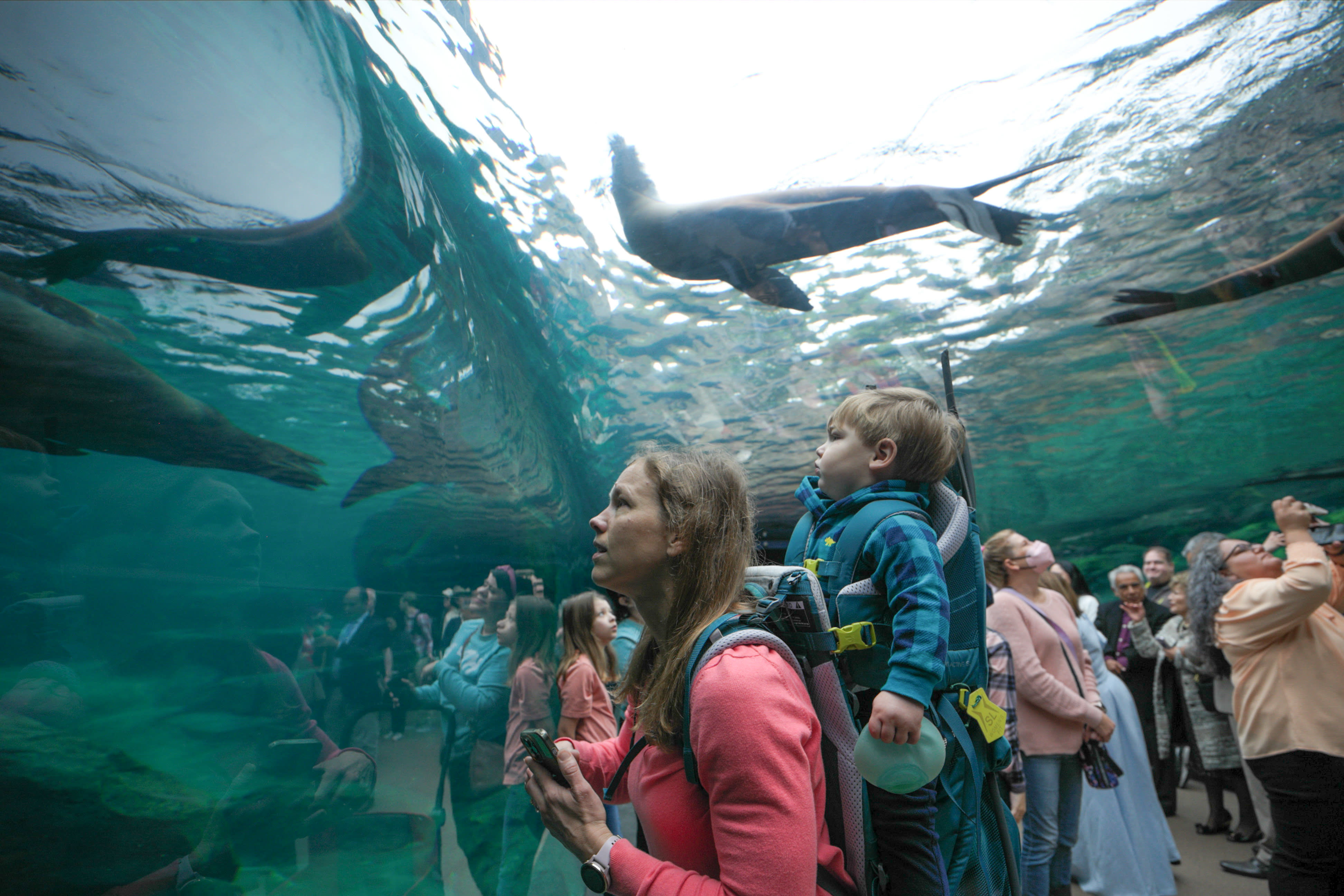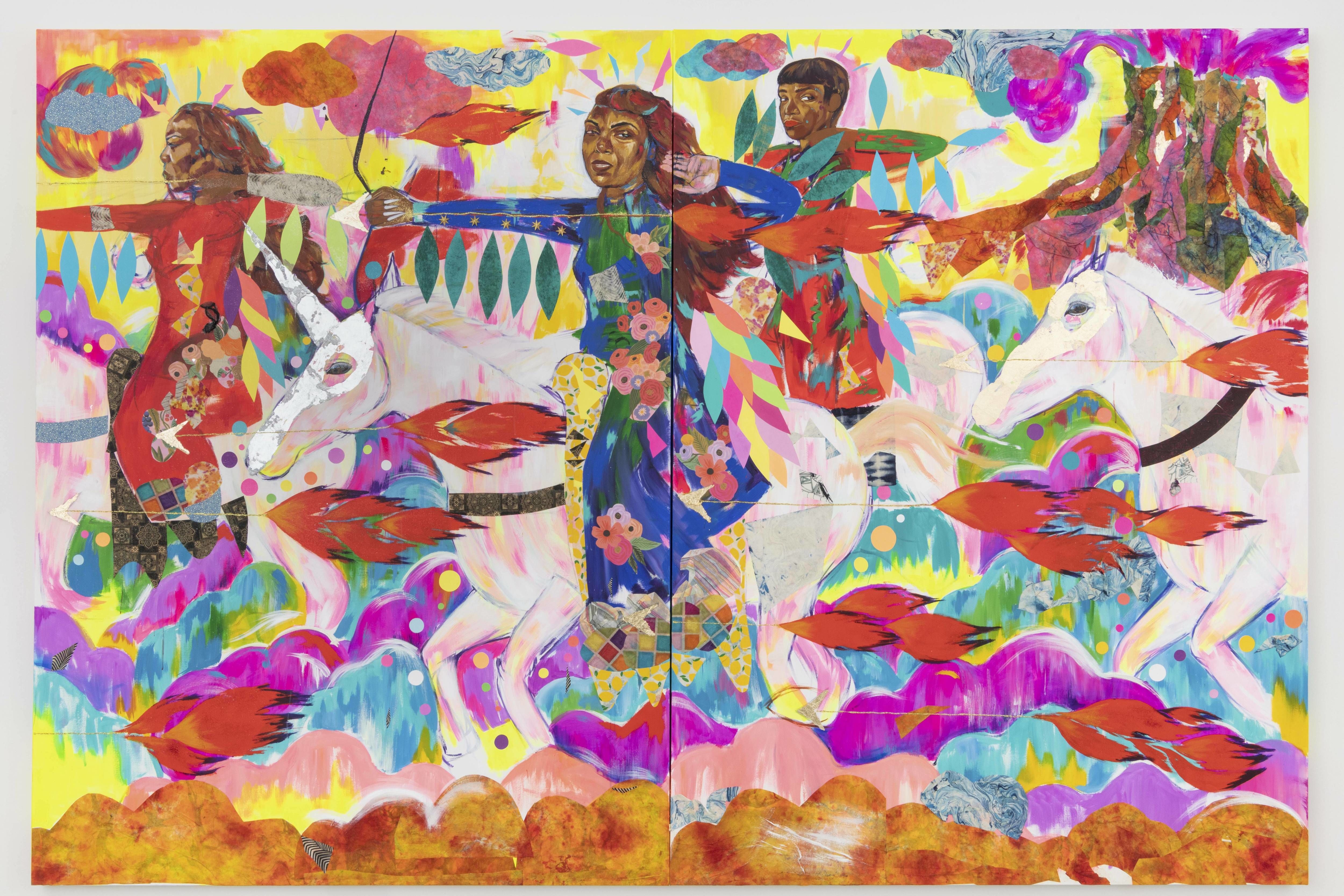Body Worlds Is Back at HMNS to Get Under Your Skin
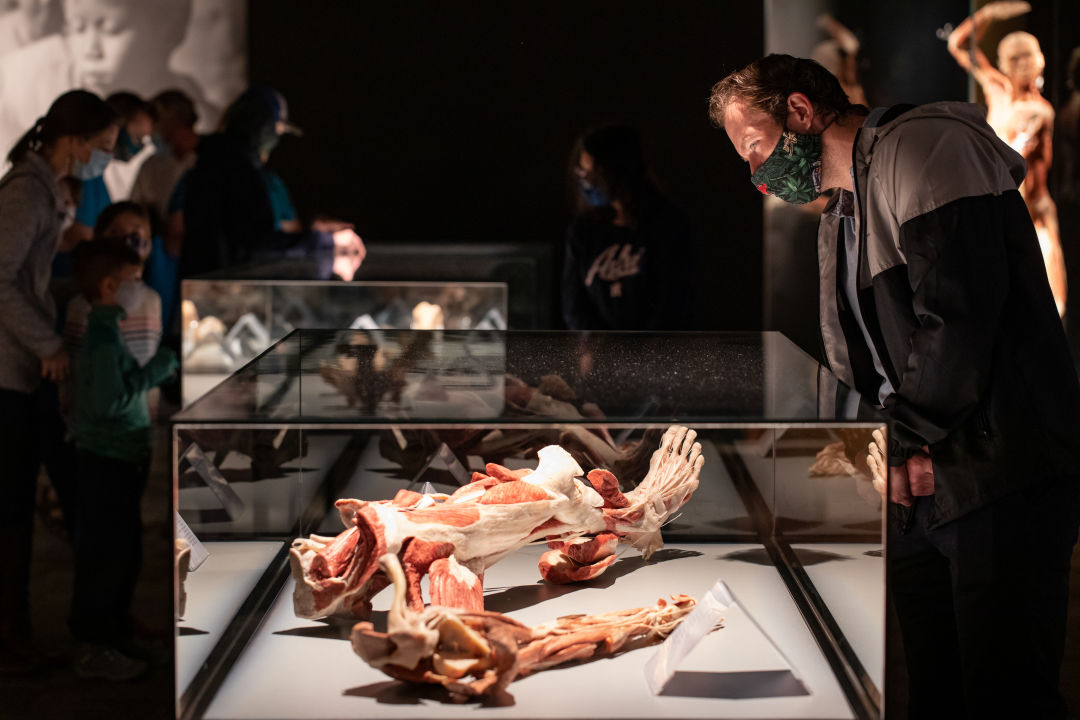
Body Worlds & The Cycle of Life at the Houston Museum of Natural Science.
Image: Courtesy Mike Rathke / HMNS
If you go out in public, remember to follow social distancing guidelines (at least six feet between you and anyone else), wash hands often and thoroughly, and wear a face mask.
Put on your science hats, Houstonians, 'cause Body Worlds is back in the Bayou City. The globe-trotting exhibit that puts the intricacies of anatomy front and center has made its return to the Houston Museum of Natural Science after 12 years with a new iteration, Body Worlds & The Cycle of Life.
This version of the popular exhibit series, which is on display through May 31, 2021, explores the human body from inside the womb until it draws its very last breath. But, really, Houstonians are just happy to see any Body World at the museum. The anatomical exhibit has been a favorite of Houstonians since it first came to the museum in 2006, says HMNS Curator of Anthropology Dirk Van Tuerenhout, and visitors have been clamoring for its return.
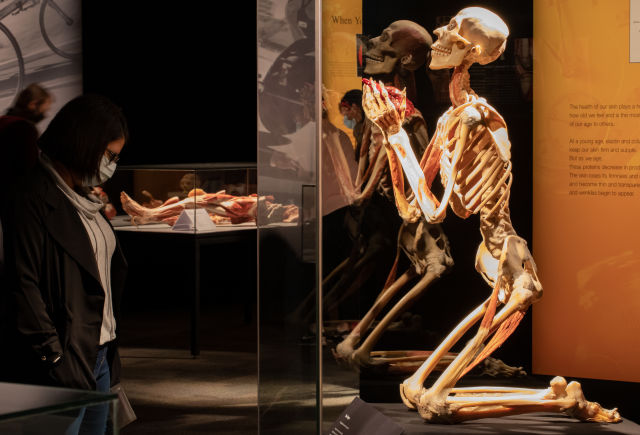
Image: Courtesy Mike Rathke / HMNS
So, what makes these exhibits so fascinating? The simple answer is that you’ve never seen the human body quite like this.
Body Worlds use plastination, German anatomist Dr. Gunther von Hagens’s multi-step process of preserving real human bodies by replacing bodily fluids and fats with plastics, to give visitors an up-close look at human anatomy (according to the exhibition’s website, these bodies have been donated to science, though there have been controversies in the past over their source of origin, and, of course, the fact they’re real human remains).
Since the first Body Worlds exhibit premiered in 1995, more than 50 million people in 140 cites worldwide have journeyed under the skin to gain a better understanding of themselves. And now they can do it all over again, though through a slightly different lens.
The new Cycle of Life exhibit features more than 100 sliced-and-diced specimens ranging from whole body plastinations, to bodily regions and systems (think the nervous or skeletal system), and even individual organs. Some bodies are posed to reveal what our inner workings are up to as we go through everyday activities, like walking, sitting at a table, and kneeling in prayer, while others focus on more specific actions like playing football or dancing.
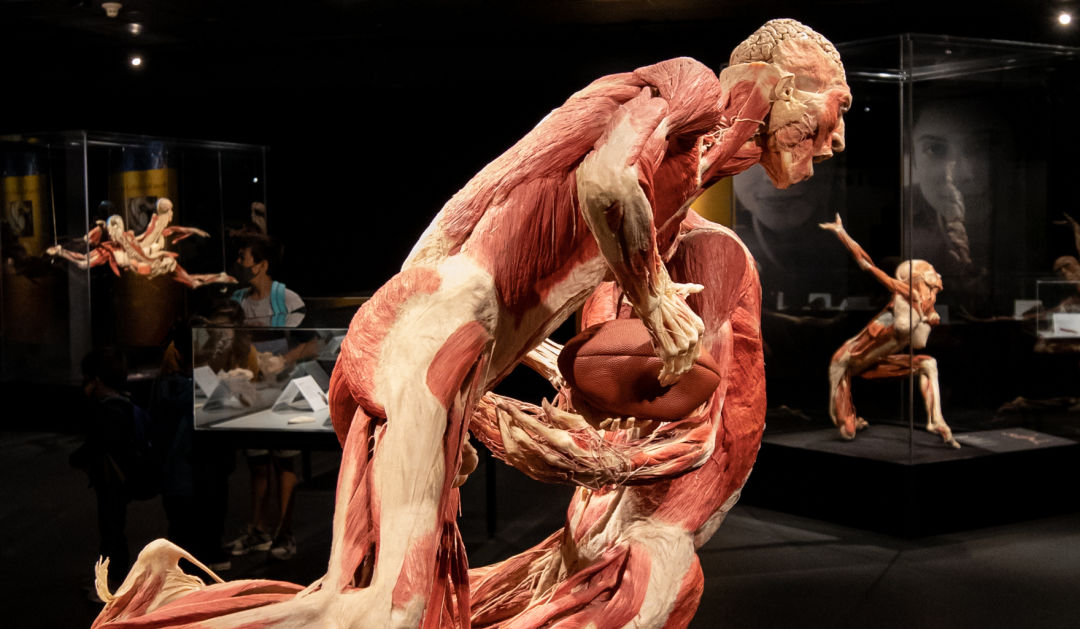
Image: Courtesy Mike Rathke / HMNS
“I find the most unique aspect to be the attention that is given to both the mechanics of our body—muscles, skeletal features—as well as the human mind,” Van Tuerenhout says. “It makes us who we are: individual human beings who are capable of introspection and awe."
Now, we did say this particular Body Worlds exhibit highlights the body from life to death, and this focus is not for the faint of heart.
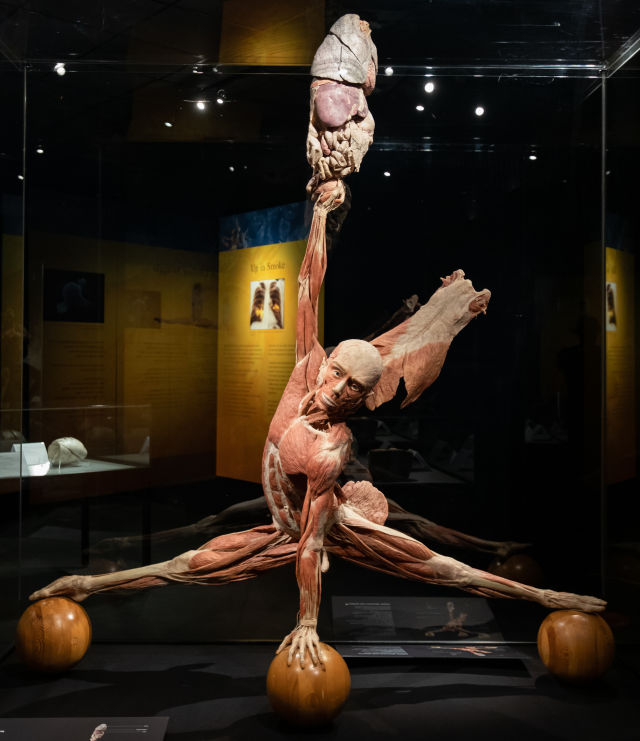
Image: Courtesy Mike Rathke / HMNS
Included among the specimens are preserved fetuses; aging muscles and organs; and the effects of unhealthy lifestyle choices, like the specific display that compares smoker’s lungs to those of non-smokers. Parts of the exhibition also address the array of defenses our body possesses to fight off disease, while others focus on well-known conditions of aging, like Alzheimer’s disease and cataracts.
Whether you find Body Worlds grotesque, beautiful, or beautifully grotesque, it’s even more important than ever to understand our bodies as we face a health crisis that’s revealed how much there still is to learn about the ways our bodies work.
“The human body, like any other living organism, is a showcase of how millions of years of evolution has shaped the lifeforms currently on our planet,” says Van Tuerenhout.
Thru May 31, 2021. From $15. Houston Museum of Natural Science, 5555 Hermann Park Dr. 713-639-4629. More info and tickets at hmns.org.


